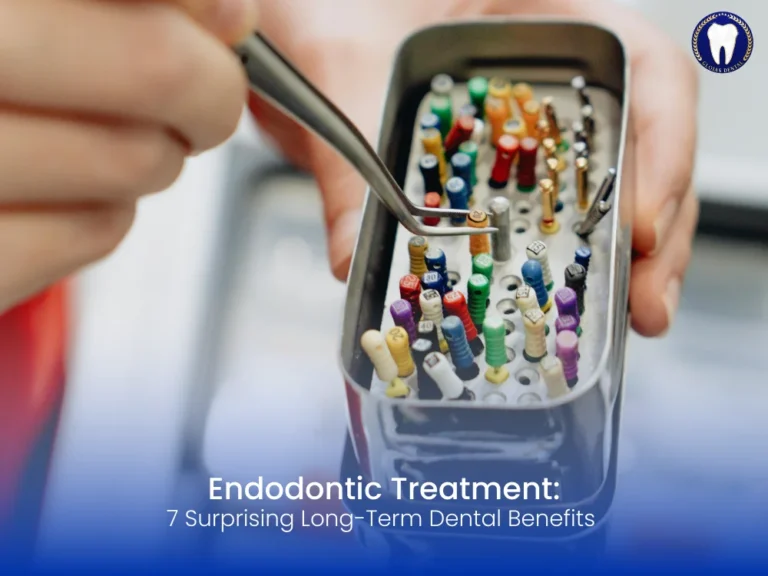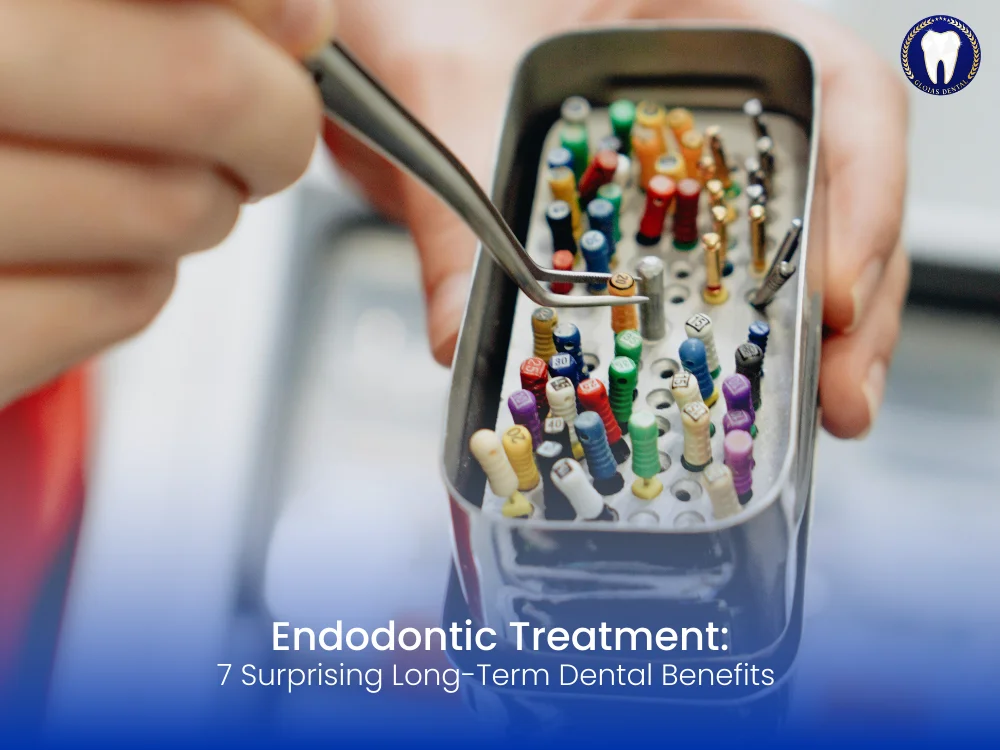Endodontic treatment, commonly known as a root canal, often strikes fear into the hearts of dental patients. However, contrary to popular belief, this procedure is not only routine but also highly effective in saving teeth and preventing future oral health problems. In this article, we’ll explore the major advantages, process, and myths about endodontic treatment, shedding light on why it’s a smart move for your dental health.
Understanding Endodontic Treatment
Endodontic treatment is a dental procedure designed to eliminate infection from the root canal of a tooth. It involves cleaning, disinfecting, and sealing the tooth’s internal canals. This treatment is typically needed when the pulp, the soft tissue inside the tooth, becomes inflamed or infected due to deep decay, cracks, or trauma.
Why Is Endodontic Treatment Important?
When left untreated, a tooth with an infected pulp can cause severe pain, abscess formation, and even bone loss around the tooth’s roots. Endodontic treatment not only removes the infection but also preserves the natural tooth, maintaining alignment and bite strength.
How Does Endodontic Treatment Work?
Diagnosis and Initial Consultation
The process begins with a thorough dental examination and X-rays to assess the extent of the infection. Dentists determine whether endodontic treatment is suitable or if the tooth requires extraction.
The Procedure
- Anesthesia – Local anesthesia ensures a pain-free experience.
- Access Opening – A small opening is made in the crown to access the pulp chamber.
- Cleaning and Shaping – The infected pulp is removed, and the canals are shaped.
- Filling – Canals are filled with a biocompatible material like gutta-percha.
- Sealing – The tooth is sealed and may receive a crown for protection.
7 Surprising Benefits of Endodontic Treatment
Preserves Your Natural Smile
Nothing beats the look and function of your natural teeth. Endodontic treatment helps retain your natural tooth structure, preserving your smile and avoiding the need for dentures or bridges.
Prevents Further Dental Complications
Without treatment, an infected tooth can lead to more serious issues, including systemic infections. Endodontic treatment acts as a preventive measure against these complications.
Relieves Intense Dental Pain
Once the infection is removed, patients typically experience immediate relief from pain, making this procedure a game-changer for those suffering from toothaches.
Efficient and Quick Recovery
Thanks to advancements in dental technology, endodontic treatment is quicker and more comfortable than ever. Most patients return to normal activities the next day.
Cost-Effective in the Long Run
While the upfront cost may seem significant, it is often less expensive than extracting a tooth and replacing it with an implant or bridge.
Improves Overall Oral Health
By removing infection and sealing the tooth, endodontic treatment supports healthier gums and teeth, reducing the risk of periodontal disease.
Boosts Confidence and Functionality
Restoring a damaged tooth enhances your ability to chew, speak, and smile without hesitation, positively affecting your daily life and self-esteem.
Post-Treatment Care Tips for Endodontic Treatment
- Avoid chewing on the treated tooth until it’s fully restored with a crown.
- Maintain oral hygiene with regular brushing and flossing.
- Schedule follow-up visits to monitor healing and restoration.
- Consider using a nightguard if you grind your teeth.
Common Myths About Endodontic Treatment
“Root Canals Are Painful”
Modern techniques and anesthesia have made the procedure nearly painless. Most discomfort stems from the infection, not the treatment.
“Tooth Extraction Is Better”
Preserving your natural tooth is always preferable. Extractions can lead to bite issues and are generally more expensive to replace.
“Root Canals Cause Illness”
This outdated myth has been debunked. There is no scientific evidence linking root canal therapy to disease elsewhere in the body.
FAQs About Endodontic Treatment
1. Is endodontic treatment painful?
Thanks to local anesthesia and modern tools, most patients experience little to no pain during the procedure.
2. How long does endodontic treatment take?
Typically, it takes one to two visits, each lasting about 60 to 90 minutes.
3. What are the signs that I need endodontic treatment?
Persistent pain, sensitivity to hot/cold, swelling, or a darkened tooth can indicate the need for treatment.
4. Can endodontic treatment fail?
While rare, failure can occur if canals are missed or reinfected. Retreatment is usually successful in such cases.
5. How much does endodontic treatment cost?
Costs vary depending on location and tooth complexity but generally range from $700 to $1,500.
6. Will I need a crown after a root canal?
Most back teeth require a crown for protection after root canal therapy to prevent fractures and ensure longevity.

